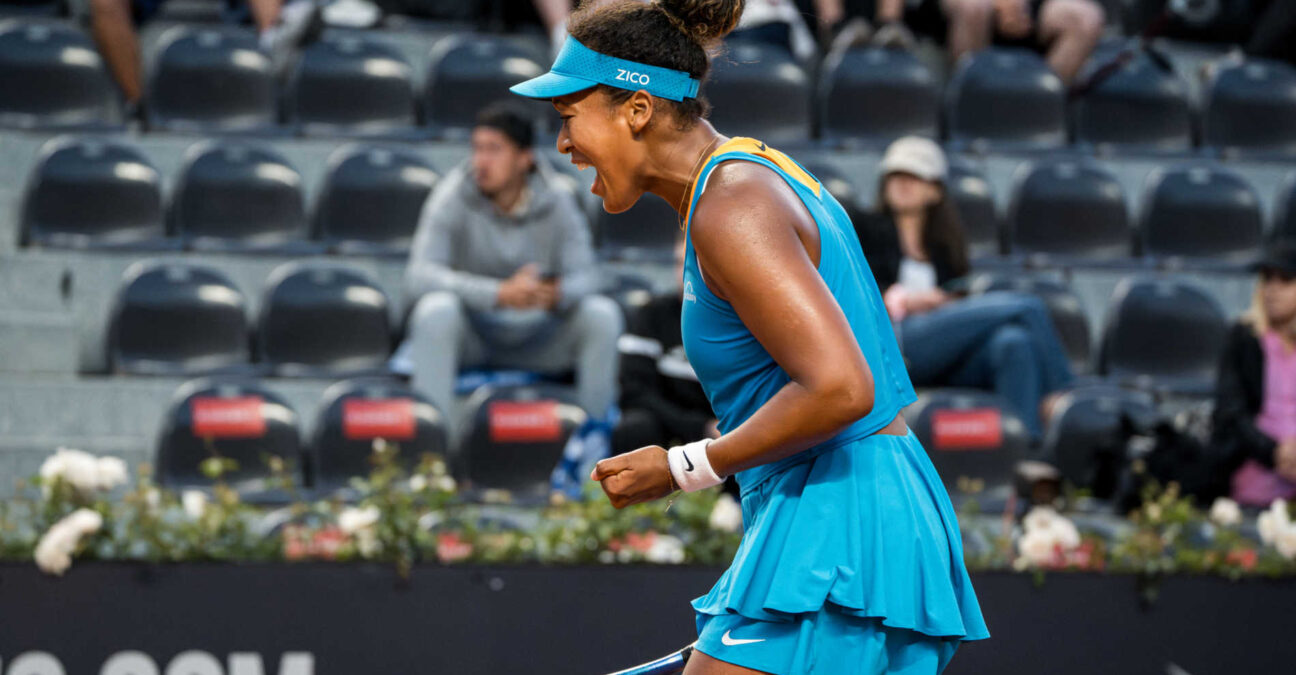Osaka says “three-set matches are really fun” as she topples Bouzkova to return to last 16 in Rome
Naomi Osaka claimed her eighth consecutive victory on clay in Rome on Saturday, stepping up a gear against Czech Marie Bouzkova in the first set (4-6, 6-3, 6-3)
 Naomi Osaka, Rome 2025 | © Tristan Lapierre / Rome 2025
Naomi Osaka, Rome 2025 | © Tristan Lapierre / Rome 2025
Naomi Osaka continues to play a rollercoaster game with her own level of play. But she also continues to refuse defeat, which has enabled her to return to the last 16 at the WTA 1000 in Rome, a year after her defeat by Zheng Qinwen at the same stage of the competition.
Two days after toppling Viktorija Golubic, who was serving for the match (2-6, 7-5, 6-1), the Japanese was again involved in a two-and-a-half hour encounter, which she dominated with much more ease against Marie Bouzkova, ranked 55th in the world (4-6, 6-3, 6-3).
The score was never as alarming to Osaka as it had been in the second round against the Swiss, but the loss of the first set might have made coach Patrick Mouratoglou and the rest of her team think she was in danger of missing out. A break was enough for Bouzkova, who battled hard and took advantage of the vulnerability of the Japanese, who lacked aggression and precision, as she often does when clay reminds her that she needs one more shot to win the point.
Osaka’s level switched in one game
As with Golubic, the match turned suddenly, in one game: the one in which Osaka remembered how she had won four Grand Slam tournaments to become world No 1 in 2019 and 2021, by playing faster than everyone else, by moving at a speed that few players on the women’s circuit can keep up with, and by opening up the court with just two strokes of her racquet.
This is how the Grand Stand crowd saw the player who, with her victory in Saint-Malo last week, was able to ‘play at a Top 5 level’ according to her coach Patrick Mouratoglou. The player who has now won eight matches in a row on clay.
From the moment she broke Bouzkova’s first service game to lead 3-0 and then 5-1 in the second set, the fate of the match was no longer in any doubt for the Italian spectators, who greeted the Japanese’s winning forehands with admiring ‘oohs’ and ‘aahs’ between the cheers from the Lazio-Juventus match at the nearby Olympic Stadium.
The only time Osaka was in danger was when she had a few lapses of concentration, some due to the inaccuracy of the electronic refereeing, others which she was able to deal with by just a smile, aware of her tennis margin.
“Yeah. “Actually, I’ve been finding the three set matches really fun,” Osaka saif to reporters after the match. “Last year, I wasn’t able to win too many, but, this year, I’m finding the joy in, I guess, learning and trying my best to overcome the difficulties.”
“I mean, typically, yes. I really like them. I think I had a really good stat with three set matches a while ago. Last year, obviously, they didn’t go my way too much. But, yeah, typically, really love three set matches.”
“I feel like that’s kind of where you get down to the wire, and you can kinda see, like, which one of us grinds it out more or something. It also tests your physical strength.”
In the next round, Osaka will meet American Peyton Stearns, ranked 42nd in the world and conqueror of Madison Keys, in a quarter of the draw that has opened up considerably since the elimination of Iga Swiatek at the hands of Danielle Collins.


















